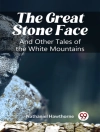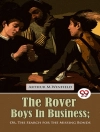James Joyce’s ‘Finnegans Wake’ is a seminal work of modernist literature that defies conventional narrative structure and employs a unique, polyphonic style characterized by its intricate puns, multilingual wordplay, and dreamlike prose. Published in 1939, this avant-garde text intricately weaves together the cycles of history, mythology, and the human experience, inviting readers to delve into the consciousness of its characters. The work operates largely as a labyrinth of language, where traditional themes are interspersed with the enigmatic, creating a rich tapestry that mirrors the architecture of the human mind and the complexities of time itself. Joyce, an Irish author whose earlier works like ‘Ulysses’ already showcased his innovative literary techniques, pushed the boundaries further with ‘Finnegans Wake.’ His extensive knowledge of languages, history, and philosophy informed his writing, reflecting his fascination with the cyclical nature of history and the unity of human experience across epochs. The creation of this monumental text occurred over many years, during which Joyce grappled with the nuances of allowing language to transcend mere communication to embody rich, fluid meaning. Readers seeking to challenge their literary sensibilities will find ‘Finnegans Wake’ an exhilarating journey. This book is not merely read; it is experienced. It rewards readers who approach its complexities with curiosity and openness to interpretation. An indispensable text for enthusiasts of modern literature, Joyce’s magnum opus compels us to rethink the foundations of narrative and the nature of consciousness itself.
Sobre el autor
James Joyce (1882-1941) was an Irish novelist, short story writer, and poet, now regarded as one of the most influential writers of the 20th century. A pioneer of the modernist avant-garde narrative, Joyce is best known for his exploration of language, symbolism, and the complexities of consciousness. Joyce’s literary prowess is vividly exhibited in his revolutionary work ‘Finnegans Wake’ (1939), a book that is both celebrated and notorious for its experimental style and dense, multilayered language. This work stands as a challenging stream of consciousness narrative replete with puns, allusions, and a unique linguistic innovation, encapsulating Joyce’s radical departure from conventional novelistic form.
Prior to ‘Finnegans Wake’, Joyce had already established his reputation with ‘Ulysses’ (1922), which similarly pushes the boundaries of the novel form with its intricate structure and rich characterisation that draw heavily on elements from Homer’s ‘Odyssey’. This deeply introspective and innovative exploration of the life of Leopold Bloom in Dublin is often considered one of the greatest novels in the English language. Joyce’s earlier works, ‘A Portrait of the Artist as a Young Man’ (1916) and the short story collection ‘Dubliners’ (1914), introduced themes of self-consciousness and paralysis, providing an incisive look into the Irish middle class. Joyce’s unique literary contributions have continued to influence generations of writers and thinkers, ensuring his lasting legacy as a titan of modernist literature.












